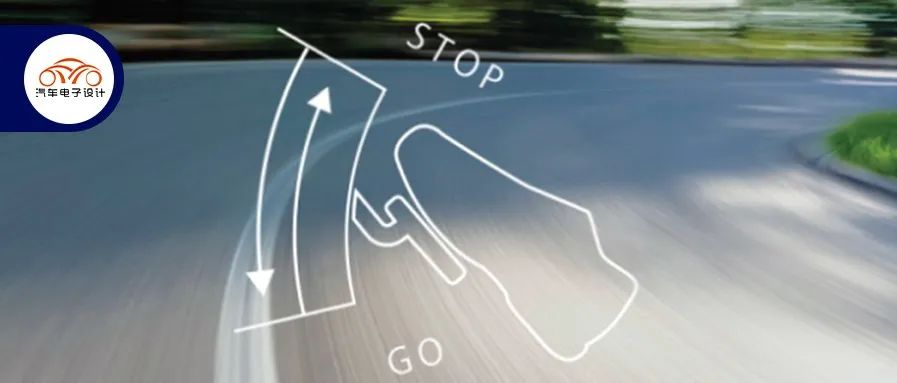Author: Zhu Yulong
We don’t want to question the safety of Tesla itself too much, but the discussion in the group with Professor Zhuxichan is indeed thought-provoking. The following is quoted:
The characteristics of the general accidents caused by mistaken stepping on the accelerator pedal are:
◎ Strong power, high probability.
◎ The probability of electric vehicles is higher than that of fuel vehicles.
◎ The accident rate of Tesla’s single pedal mode is far higher than that of other electric vehicles (the problem of mode setting. Many new energy vehicles only have energy recovery and have not been set as a true one pedal).
From the perspective of natural driving data, in the “single pedal mode”, the driver’s right foot basically does not move, and releasing the accelerator pedal can obtain a braking intensity of up to 2.5m/s2, which can stop without the need to step on the brake pedal in general. When mistakenly stepping on the accelerator pedal, the engine speed rises sharply first, up to more than 4,000 rpm, and the large torque is only available after the automatic transmission is downshifted. The car has not accelerated sharply yet, and the driver can already hear the abnormal roar of the engine. The electric motor is different, with huge torque at low speeds and quick torque response. Drivers cannot react in time after mistakenly stepping on the accelerator pedal. Therefore, the accident rate of electric vehicles mistakenly stepping on the accelerator pedal is higher than that of traditional internal combustion engine vehicles.
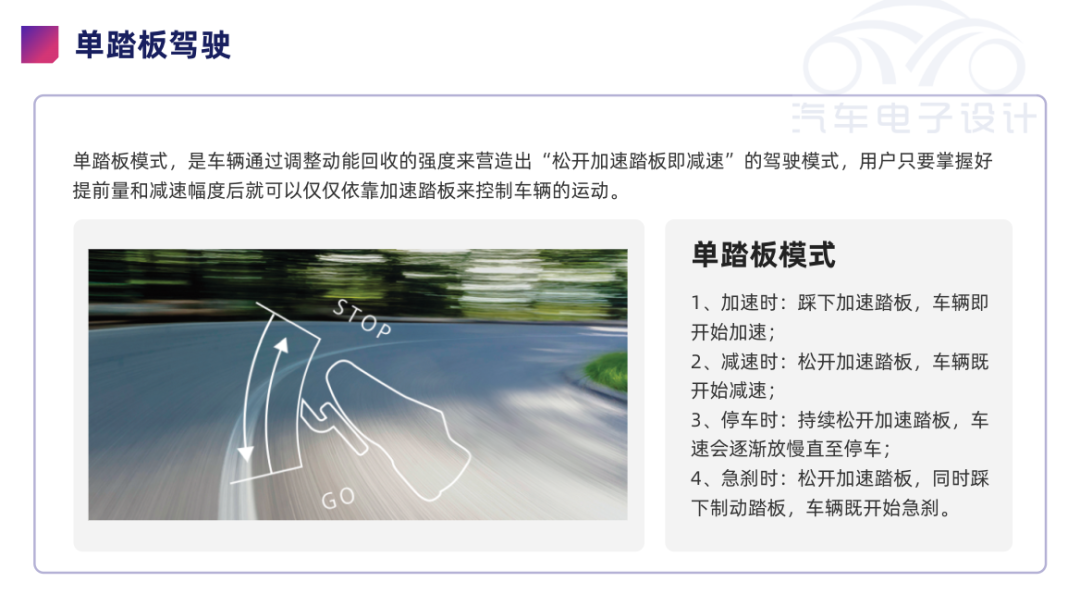
Tesla’s Settings
Car operations are becoming simpler and simpler. When we learned to drive, there were three pedals on the car, namely the clutch pedal, brake pedal, and accelerator pedal. When learning to drive, we needed to learn how to coordinate the clutch and accelerator pedals. We needed to control the clutch and accelerator pedals with the left and right feet respectively and apply the brake pedal to make the vehicle drive smoothly. After the introduction of the automatic transmission, the troublesome clutch pedal was eliminated, and the driver only needs to control the brake and accelerator pedals with the right foot to make the vehicle drive smoothly.
On electric vehicles, due to the presence of energy recovery, the “single pedal mode” that uses one pedal to drive has emerged. All vehicles retain two pedals, the accelerator and brake pedals. “Single-pedal mode” refers to the driver only needs to control the accelerator pedal to complete vehicle operations such as starting, accelerating, coasting, and even stopping. Through the electric drive system working in the form of a generator, the kinetic energy of the vehicle’s driving is converted into electrical energy stored in the power battery, which is divided into two stages: strong kinetic energy recovery stage and stopping stage.“`
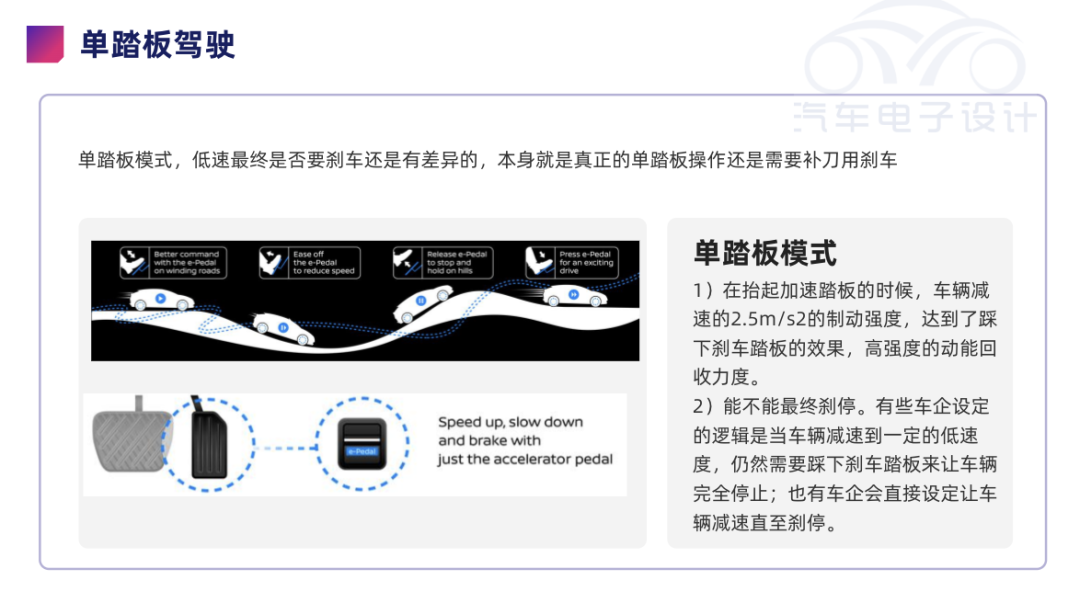
In Tesla, there are three modes available, which are coasting, hold, and creep.
-
The coasting mode allows the vehicle to slow down to about 8km/h when the accelerator pedal is completely lifted, providing an idle state which requires braking when the vehicle comes to a stop.
-
The hold mode enables the vehicle to stop in a single pedal mode.
-
The creep mode allows the vehicle to roll forward using inertia below 8km/h without providing power.
One of the biggest criticisms of Tesla is the lack of an energy recovery adjustment to consider energy consumption. In these three modes, the nature of energy recovery during driving is essentially the same except for the difference in braking when coming to a stop.
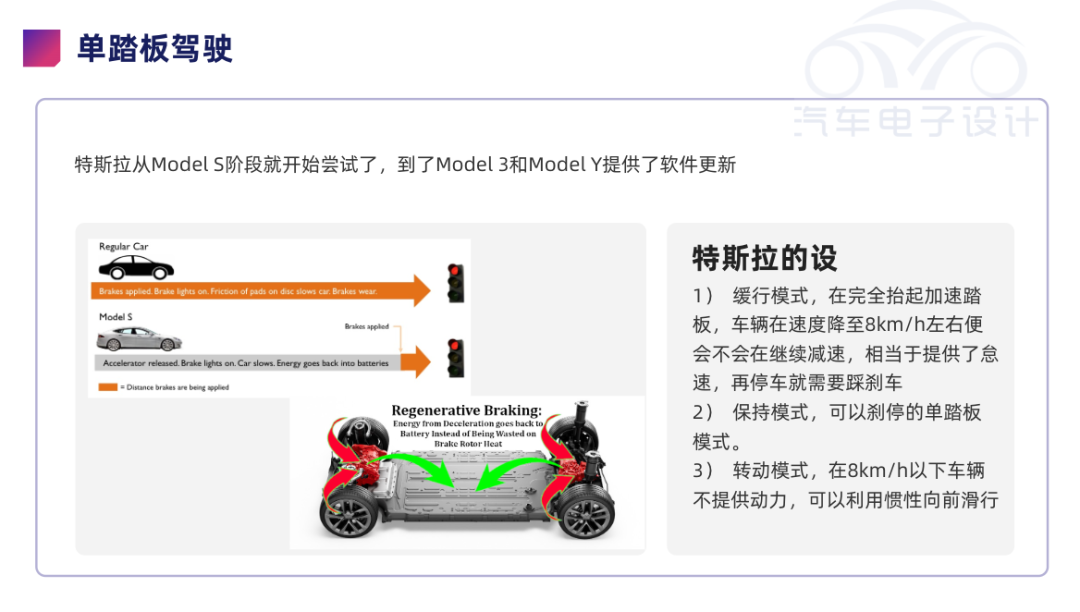
Using a single pedal mode to drive can extend the life of the vehicle’s braking system, battery range, and overall performance. Currently, this technology is being widely used all over the world, including Audi, Cadillac, Hyundai-Kia, Nissan, Volvo, Polestar, and Tesla. However, there is a significant difference in quantity between these car companies and Tesla.
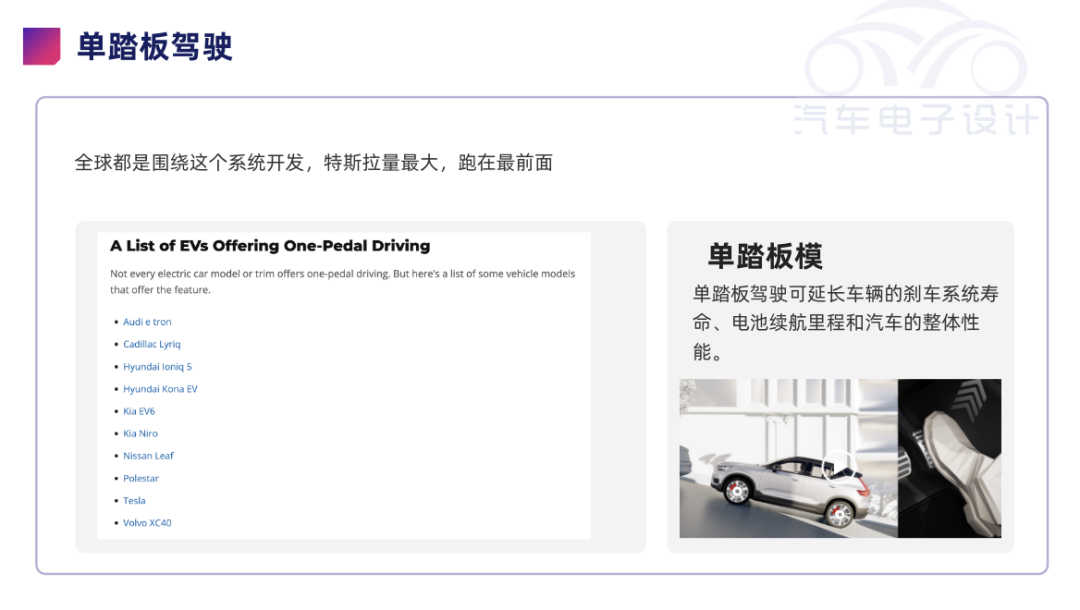
Discussion Based on Human Operation Habits
When considering the limit of energy recovery braking power, the following factors need to be taken into account:
-
When driving on slippery surfaces such as ice, snow, or mud.
-
When driving downhill.
-
When carrying heavy luggage or goods that fill the car.
However, when it comes to people, we are taught during driving lessons to keep our foot on the brake pedal and not on the accelerator pedal. In other words, reaction is trained around humans, and reflex muscle memory has formed between the gas and brake pedals.“`
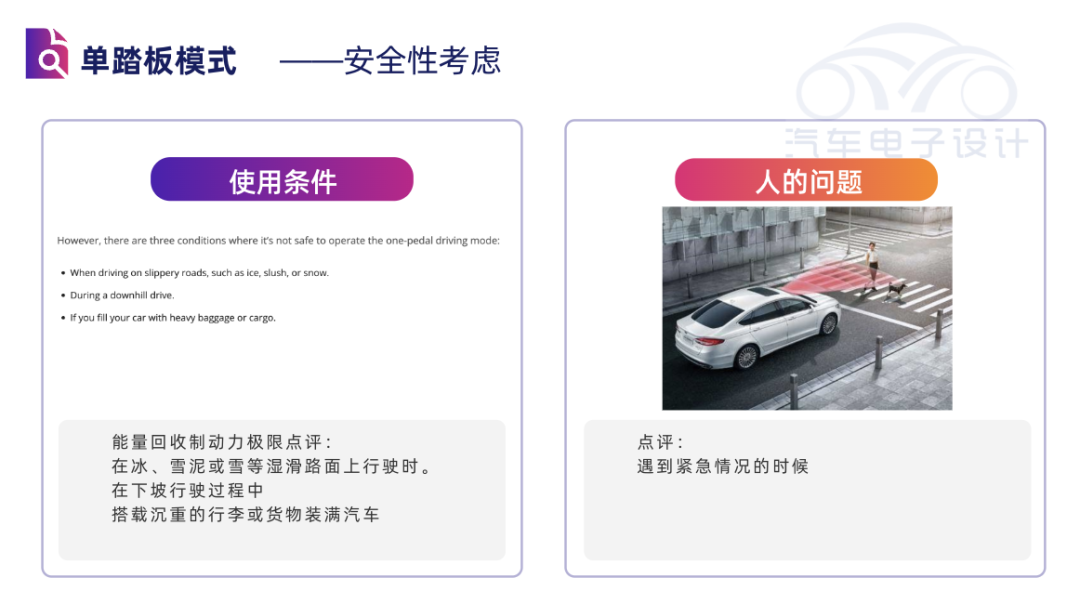
The arrival of the one-pedal driving mode changes the muscle memory naturally. Most drivers will not actively step on the brake when decelerating in a Tesla because the braking force generated by lifting the throttle is already sufficient. 90% or even all the time, the foot is on the accelerator pedal, and the speed is controlled by stepping down and lifting it. When encountered with danger, it is difficult to cultivate the muscle memory of switching to the brake pedal subconsciously, which may even lead to stepping on the accelerator pedal directly and mistaking it for the brake pedal. When accidents or potential dangers occur, the driver’s inner anxiety and confusion or lack of familiarity with this driving mode often lead to some accidents.
Conclusion: I don’t want to take sides, I just want to say that in the future, the single-pedal mode of electric cars needs to be re-examined for older drivers, as it can lead to accidents, in some states.
“`
This article is a translation by ChatGPT of a Chinese report from 42HOW. If you have any questions about it, please email bd@42how.com.
